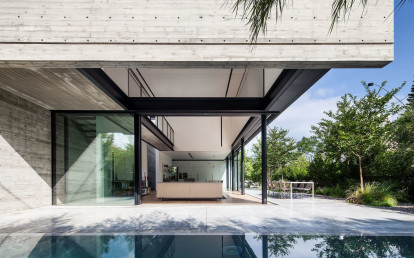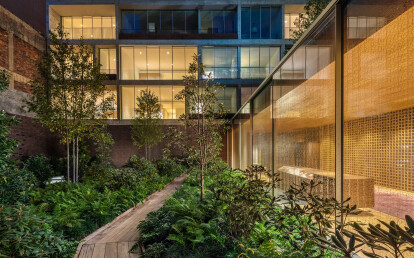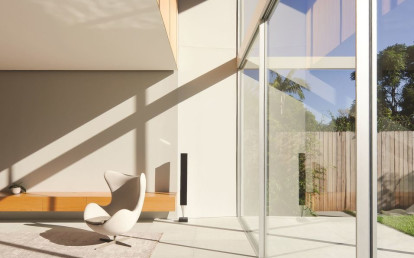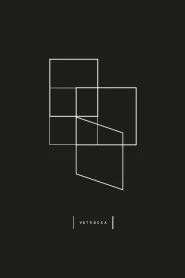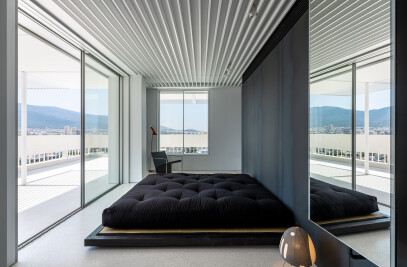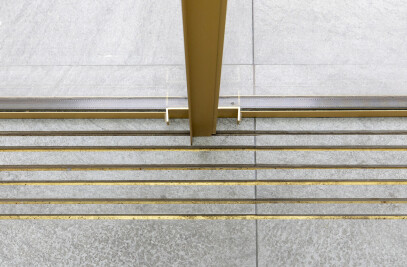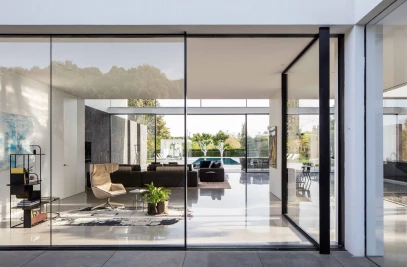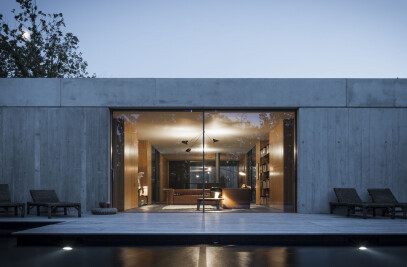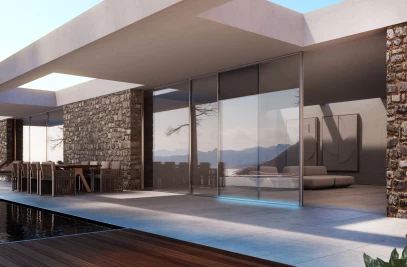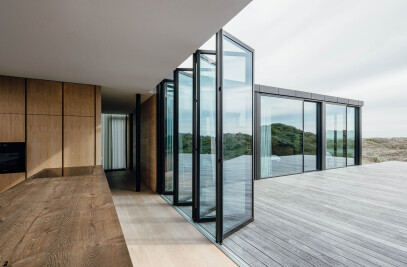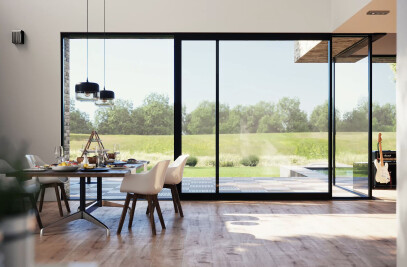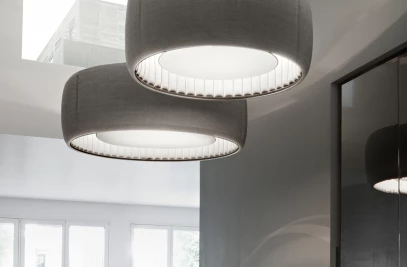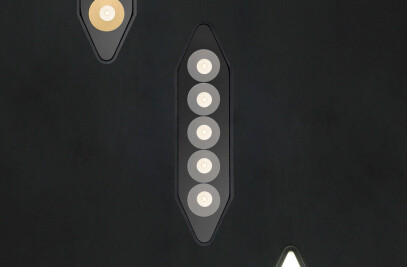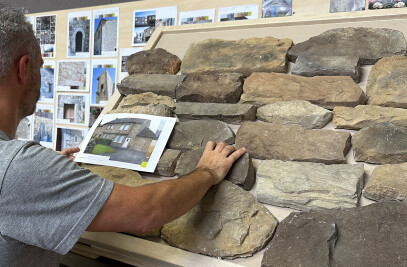The sliding window is a unique horizontal opening solution. The structure is anodised 25 micron aluminum alloy, in a natural color finish. As an option, the thermolacquered or anodised versions are available in an infinite choice of colors. The roller bearing system is made from stainless steel specially adapted for projects near the sea. Fixed or sliding, the width of the vertical profile is 22 mm and is only limited by the maximum surface area of the glass. Button-locking is available with two-point locking and cylinder locking with key. Motorisation is also possible.
Dimensions
Available in fixed or sliding versions, the width of the vertical profile is 18 mm, with the maximum surface area per pane reaching 18m², and potential for even larger panes. Movement of the panes requires only a few grams of thrust, either manually or with a motor.
Design options
This system is particularly suited for large-scale projects and offers several versatile options:
-Invisible wall: This version eliminates the architectural barrier between indoors and outdoors entirely. It allows for double or triple glazing, with options for 32mm or 44mm thickness, and sliding window surface areas of up to 18m². The innovative concept involves concealing the frame beneath the floor covering, a patented feature introduced in 2011.
-Pocket: Multiple sliding panels can be concealed within a closed and isolated space.
-Curved: The curved application supports mobile elements with a minimum radius of 3 meters and fixed elements with a minimum radius of 1.5 meters.
-Open angle: This solution liberates corners from any obstructions, allowing for various rail combinations, such as two and three rails combined.
-Mosquito net: To address insect-related issues, several options are available. These include the addition of a rail for inserting a mosquito net, or a concealed folding canvas providing 80 cm coverage in the vertical jamb.
A high-tech Swiss company
There can be no technological revolution without pioneers. Although not well-known to the general public, there is no doubt Éric Joray joined their ranks when he invented the modern minimalist window in 1992. Vitrocsa exports its systems to more than 60 countries in five continents, ensuring their current position as global bestsellers.
Vitrocsa is an official member of SWISS LABEL, a recognised symbol of quality, safety and reliability for over a century. All of its micromechanical systems and solutions are designed in the Swiss town of Saint-Aubin-Sauges by technicians
trained to watchmaking standards. Vitrocsa has been certifying its products and constantly developing new innovations for more than 25 years.
References
Designed by Agis Mourelatos | Architects, this project in Greece transforms a top floor flat from a three-bedroom layout to an open floor plan encouraging bonding and communication. Construction commenced by stripping away all existing walls, creating a seamless, environment. The perimeter of the open plan arrangement with extensive use of glazed windows on all sides blurs the boundaries between interior and exterior. From all four corners of the residence there are 360-degree unobstructed views of the cityscape and its distinctive Athenian topography.
Built on a 700 square meter plot on a main road of a quiet North Tel Aviv neighborhood, Z house was designed to provide it’s owners a sense of serenity and utmost privacy, offsetting the shortcomings of its busy location. Entering Z house showcases the north façade, completely open to the back garden, bringing together the interior and outdoor living spaces. To emphasize the lightness of this façade, a 4-meter-high glass wall rises over the ceiling creating the appearance it is floating in space.
Situated along a rugged stretch of coastline, the family retreat designed by Walker Warner embraces the spirit of Mauka-Makai—the symbolic flow of lava from mountain to sea—through its direct connections to the volcanic landscape and dramatic vistas of the Pacific Ocean. Kua Bay Residence’s site captures the stark contrasts between land and sea in the Hawaiian topography. The challenge was to manipulate the site so that the buildings would blend with the landscape while providing a graceful and multi-layered experience from mountain to sea.
The main hall seamlessly frames the ocean views with expansive floor-to-ceiling pocketing glass doors. A separate system of pocketing wood screens is designed to soften the sunlight without compromising the views. Materials—including basalt, Alaska Yellow Cedar and steel—are simple, tailored and unadorned, and used for both interior and exterior surfaces.
